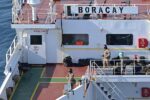China is reportedly planning to procure up to 20 Ilyushin Il-78MK-90A aerial refueling tankers from Russia by 2028. If confirmed and executed on schedule, the deal would significantly expand the People’s Liberation Army Air Force’s (PLAAF) strategic reach and sustainment capabilities. The move comes amid China’s ongoing efforts to build a more expeditionary air force capable of operations beyond its immediate periphery.
Il-78MK-90A: A Modernized Soviet Workhorse
The Il-78MK-90A is the latest export variant of the Soviet-era Il-78 Midas tanker aircraft. Developed by Ilyushin Aviation Complex under the United Aircraft Corporation (UAC), the MK-90A version features substantial upgrades over earlier models. These include:
- New PS-90A76 turbofan engines replacing older D-30KP engines — improving fuel efficiency and range
- Digital avionics suite with upgraded navigation and communications systems
- Structural modifications for improved reliability and maintainability
- Capability to refuel three aircraft simultaneously via probe-and-drogue system (two wing pods + one fuselage hose)
The aircraft is based on the Il-76MD-90A airframe — itself a heavily modernized version of the classic Il‑76 — which has been in serial production at Aviastar-SP in Ulyanovsk since the mid‑2010s. The MK‑90A variant was first flight-tested in January 2018 and entered limited service with the Russian Aerospace Forces (VKS) around 2021–22.
Strategic Implications for PLAAF Force Projection
The addition of up to 20 new-generation tankers would represent a major leap forward for China’s aerial refueling capacity. Currently, the PLAAF operates a small number of legacy H‑6U tankers derived from the H‑6 bomber platform (itself based on the Tu‑16), as well as a limited number of imported Il‑78s acquired from Ukraine in the early 2010s.
This limited tanker fleet constrains sustained long-range operations involving platforms such as:
- JH‑7 fighter-bombers and J‑16 multirole fighters
- KJ-series airborne early warning & control (AEW&C) aircraft
- H‑6N strategic bombers with standoff munitions or potential nuclear roles
A larger fleet of modern tankers would enable extended patrols over contested areas like the South China Sea or East China Sea, increase sortie rates during regional crises, and support long-range missions into Western Pacific or Indian Ocean regions. It also enhances China’s ability to escort strategic assets such as bombers or AEW&C platforms during deterrence patrols or power projection flights.
Status of Negotiations and Production Capacity Constraints
The reported plan envisions delivery of all 20 aircraft by around 2028 — an ambitious timeline given current Russian production constraints. Aviastar-SP’s capacity has been under strain due to sanctions-related supply chain disruptions following Russia’s full-scale invasion of Ukraine in February 2022. While Moscow has prioritized military aviation production under its State Armament Program through at least 2030, fulfilling both domestic VKS orders and export contracts may prove challenging.
Nonetheless, reports suggest that discussions between Chinese defense procurement authorities and Rosoboronexport/UAC have advanced significantly since late 2023. The deal may be structured as either a direct purchase or licensed co-production agreement depending on final terms.
Why Not Indigenous Alternatives?
The PLAAF has long sought indigenous tanker solutions but progress has been slow. The Y‑20U — an aerial refueling variant of China’s Y‑20 heavy transport — began testing around mid‑2018 but remains in low-rate production with unclear IOC status as of late 2024. Technical challenges related to fuel transfer systems and mission avionics have reportedly delayed its full operational deployment.
A parallel acquisition of Il‑78MK‑90As could thus serve as an interim capability bridge while domestic platforms mature — similar to how China previously imported Su‑27/30 fighters before fielding J-series derivatives like J‑11B/D or J‑16.
Moscow’s Strategic Calculus: Export Revenue Meets Geopolitical Leverage
For Russia, this potential sale offers both economic relief and geopolitical signaling value:
- Export revenue: Each Il‑78MK–90A is estimated at $100–120 million depending on configuration; a batch of twenty could yield over $2 billion for UAC/Rostec-affiliated firms.
- Sino-Russian defense ties: The deal reinforces bilateral military-industrial cooperation amid growing Western isolation for both states.
- Diversionary leverage: Enhanced Chinese reach could indirectly complicate U.S./allied planning in Indo-Pacific theaters — aligning with Moscow’s interest in diffusing Washington’s strategic bandwidth across multiple fronts.
This would not be China’s first major Russian aerospace import; previous deals include Su–35 fighters (24 delivered between ~2016–2019) and S–400 Triumf SAM systems (~2018). However, this marks one of Beijing’s largest-ever commitments to Russian aerial support platforms specifically geared toward enabling expeditionary air operations.
Aerial Refueling: A Critical Enabler in Modern Airpower Architecture
Aerial refueling remains one of the most decisive force multipliers for any modern air force seeking global reach. Without it, even advanced combat aircraft are tethered to land bases within their unrefueled combat radius — limiting flexibility during crisis response or deterrence signaling missions.
NATO forces demonstrated this repeatedly during operations over Libya (2011), Syria/Iraq (~2014–19), and Afghanistan (~2001–21). Similarly, U.S. Indo-Pacific Command relies heavily on KC-series tankers based across Guam, Japan, Hawaii and Alaska to sustain forward presence across vast oceanic distances.
If China successfully fields two dozen modern tankers by decade’s end — combining imported Il–78MK–90As with growing numbers of Y–20Us — it will mark a significant milestone toward transforming PLAAF into a truly expeditionary force capable of sustained power projection beyond East Asia.
Conclusion: A Tactical Stopgap with Strategic Consequences
The reported Chinese plan to acquire up to twenty Il–78MK–90As underscores both near-term capability gaps in its aerial refueling fleet and longer-term ambitions for global airpower reach. While indigenous solutions like Y–20U remain under development, Russian-supplied tankers offer an immediate boost that could reshape regional airpower dynamics if deliveries proceed on schedule.
Moscow gains financial dividends while deepening defense-industrial ties with Beijing amidst Western decoupling pressures. For regional actors including Japan, Taiwan, India—and planners at INDOPACOM—the prospect of a more mobile PLAAF supported by robust tanker fleets warrants close scrutiny over coming years.










